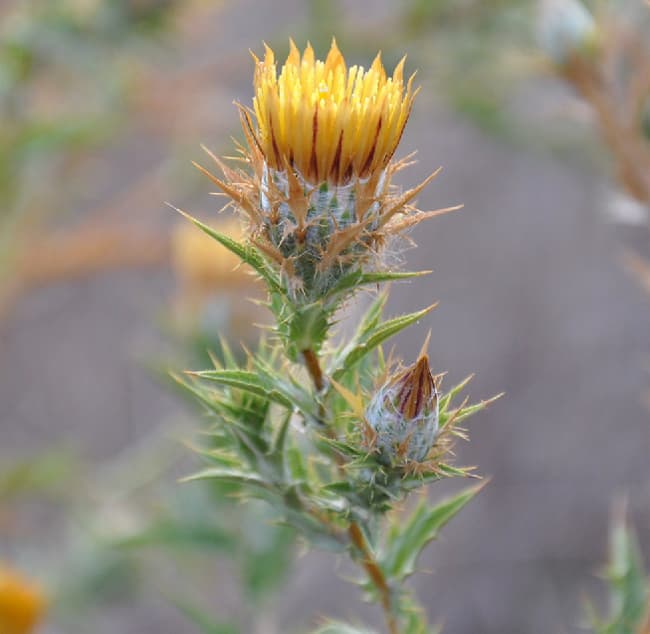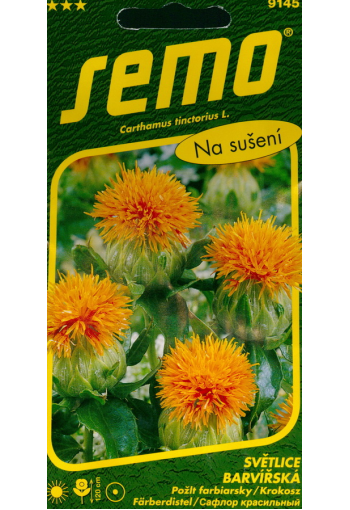Arrangement novelty.
Annual.
Sowing time: April, May.
Flowering time: June, July, August.
Planting method: open ground.
Plant 80-120 cm tall, straight branched stems with inflorescences with baskets at the ends. The inflorescences are small, 3-4 cm in diameter.
It is used for making dry bouquets and for planting in borders, on discounts, in groups on the lawn. Has medicinal properties.
Chinese traditional medicine knew about it as early as 1061. Used for diseases of the heart and coronary vessels.
If you cook food in safflower oil (made from seeds), then negative cholesterol is reduced.
In some countries, safflower is one of the most beloved horticultural crops. This plant is popular with both florists and flower growers.
It is grown for its colorful inflorescences, which are used to make bouquets of fresh or dried flowers.
Agricultural technology.
Unpretentious plant, prefers a sunny location, any sufficiently fertile soil.
Sowing is carried out in late April - early May directly into the ground. Shoots appear in 20-30 days.
They are thinned out, maintaining a distance between plants of 20-25 cm. Plants bloom in June and bloom all summer.
.jpg)
Safflower - Carthamus tinctorius.
Homeland - Ethiopia and Afghanistan. Cultivated in Europe, India, the Middle East, China, USA, Uzbekistan.
Annual, up to 1 m high, bush width 30-35 cm. The stem is branched, with a whitish gloss. The leaves are dense, sessile, oblong-lanceolate, serrated.
They resemble the greens of an artichoke or thistle and, like theirs, are equipped with sharp thorns. Cut varieties are less prickly.
The inflorescences appear from June to September, they are 3.5 cm in diameter and are colored yellow-orange or orange-red.
Name: from the Arabic name of the plant "karthom" or "karthum" - to paint, because its flowers contain the pigment kartamine,
which when dissolved in water gives a yellow color, and in alcohol - red.
Location: Safflower loves warmth and bright sunlight. It can grow in any soil, as long as it is not too wet. Safflower is fairly drought tolerant.
However, the plant needs a lot of nutrients, so it is better for it to choose loose sandy or loamy soil and provide good drainage.
Reproduction: by seeds.
Seeds are sown in April-May directly in open ground, as transplanting seedlings leads to disruption of their growth.
Use: for live bouquets, safflower is cut at the moment when the first flowers open.
To make compositions from dried flowers, the shoots are dried, cutting them off when all the flowers are fully opened.
Given the large size of the inflorescences, they have to be dried very quickly, providing intensive ventilation, otherwise mold will develop on them.
Safflower can be used as a border decoration, especially those that use wildflowers.

Eng.: Safflower. Suom.: Värisaflori. Sven.: Färgtistel.











